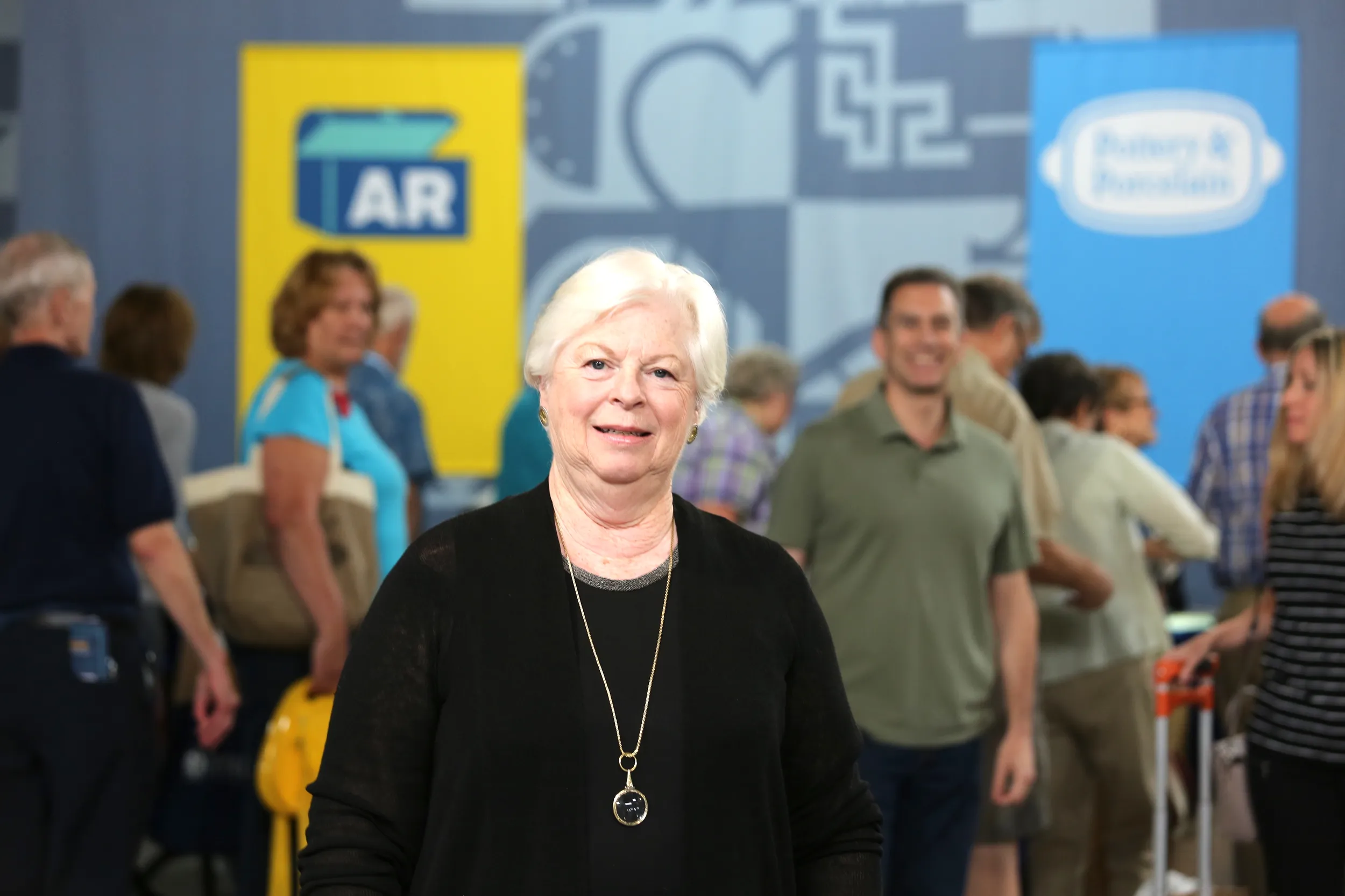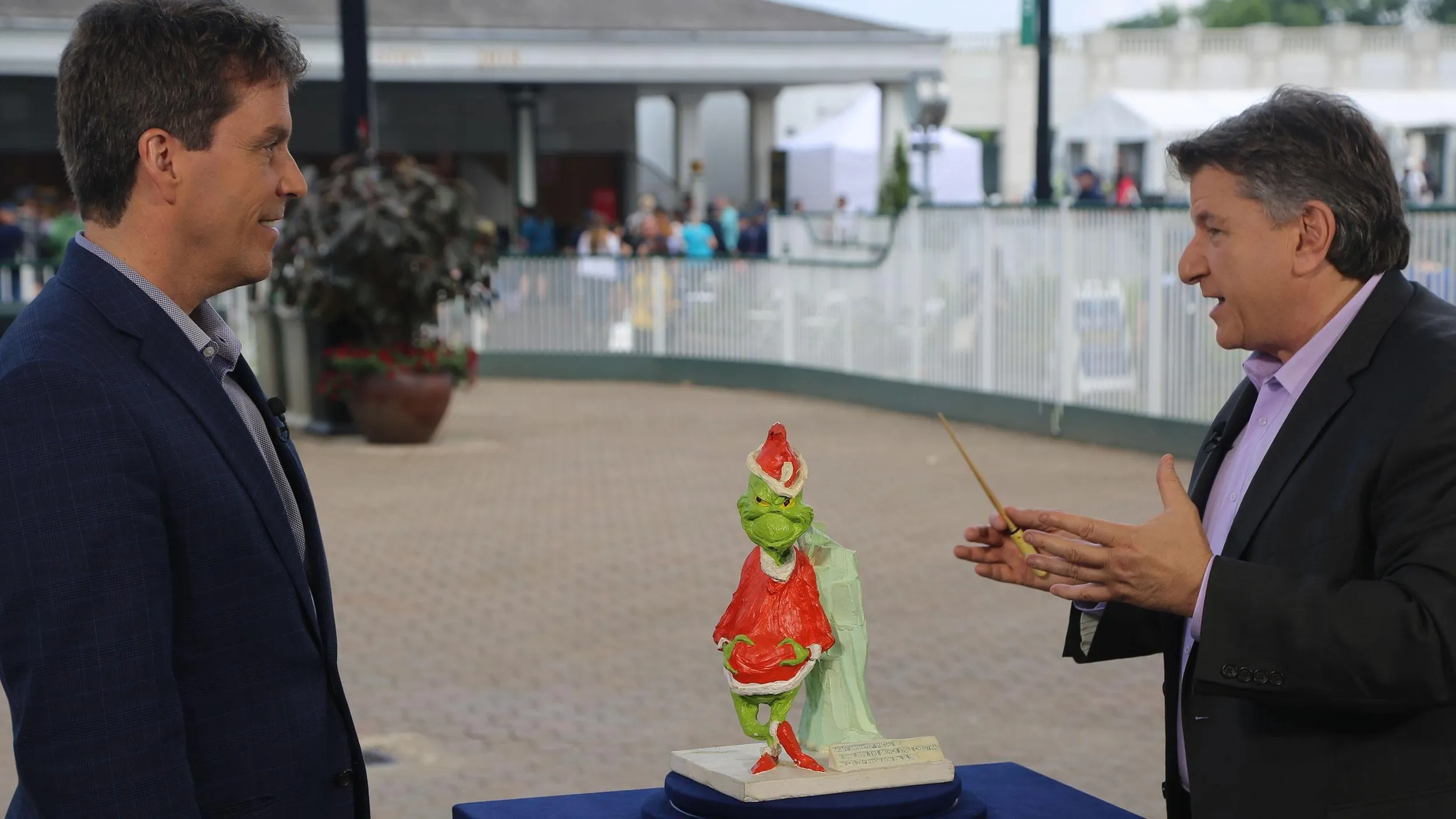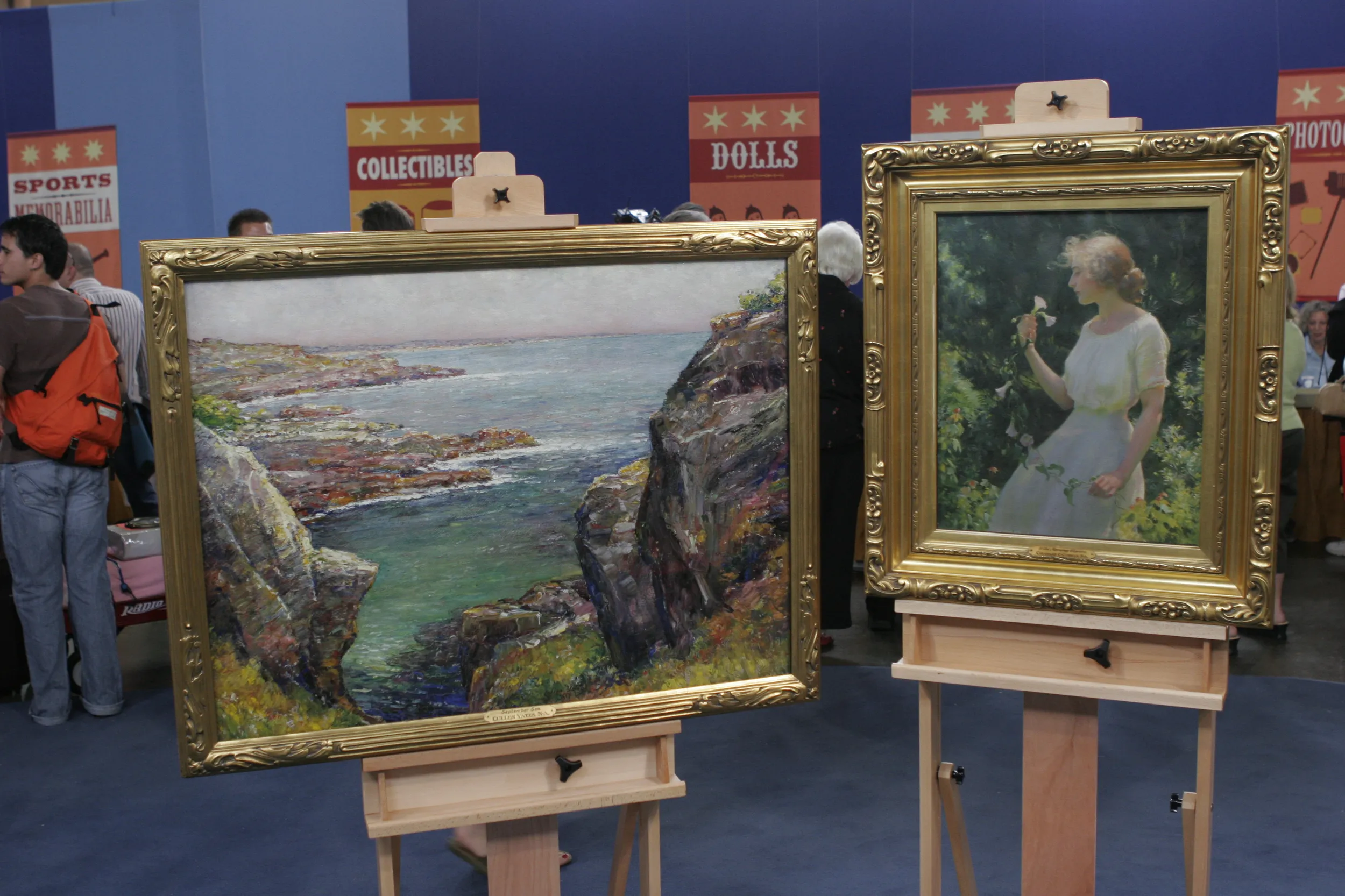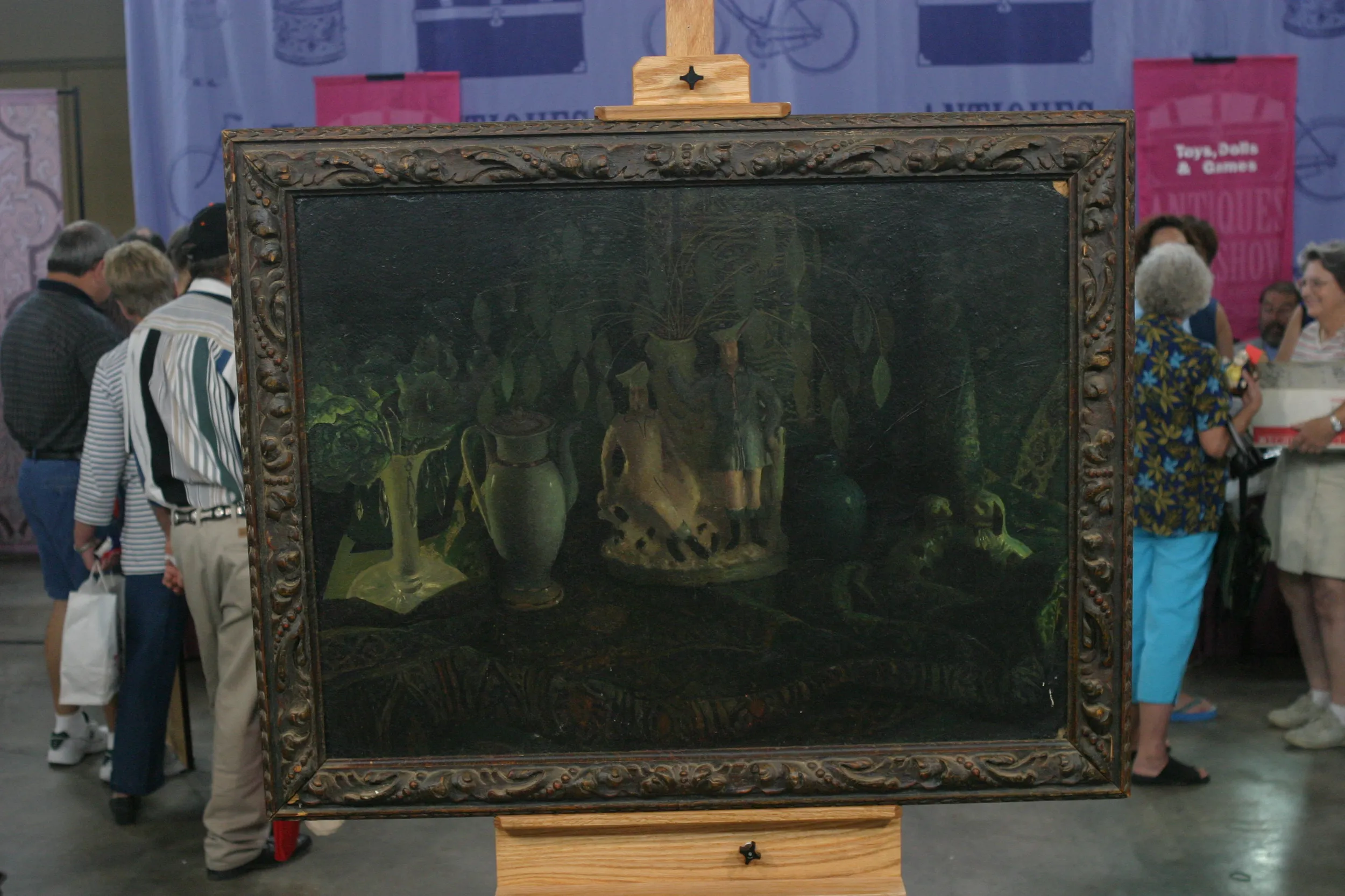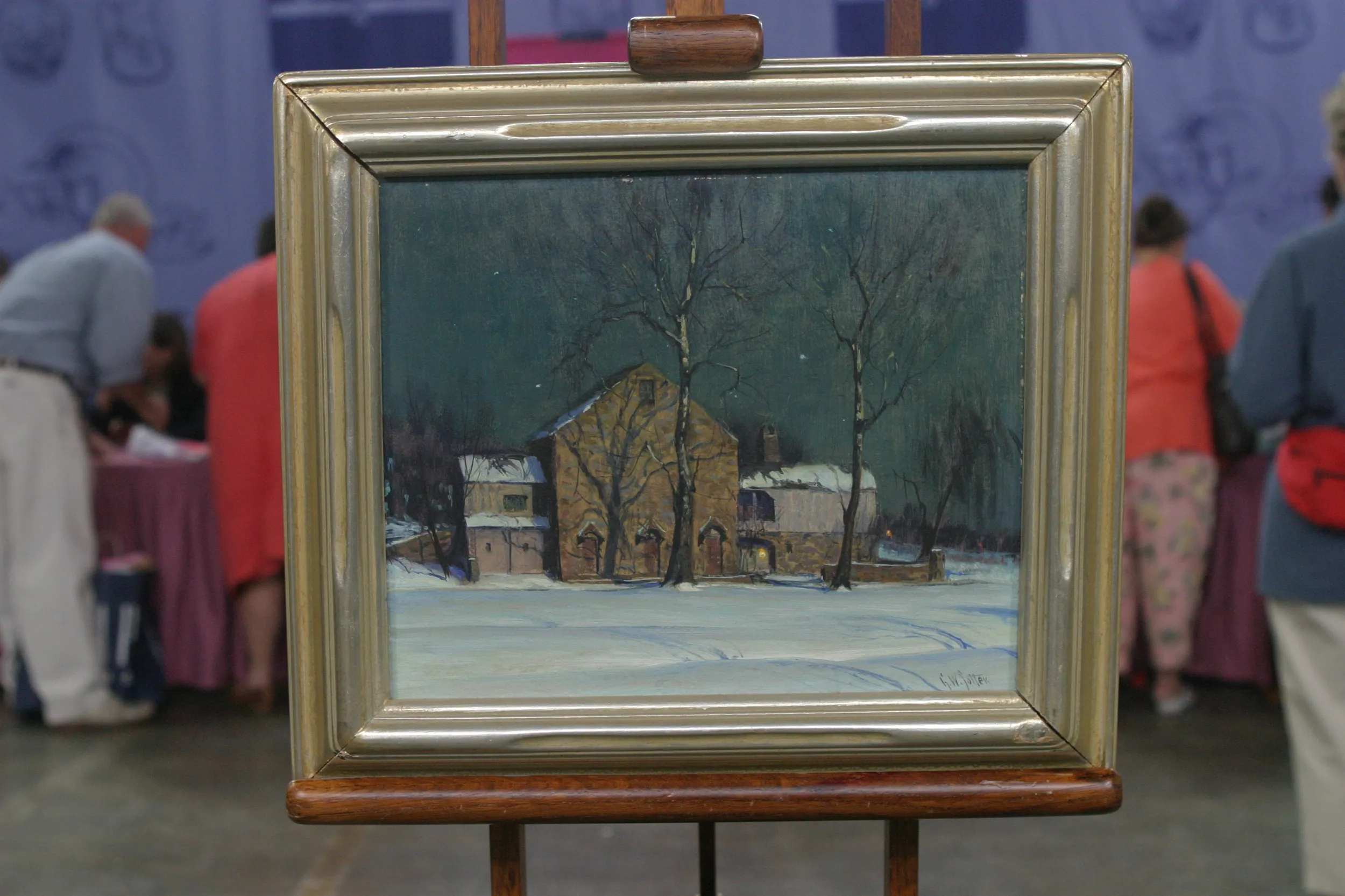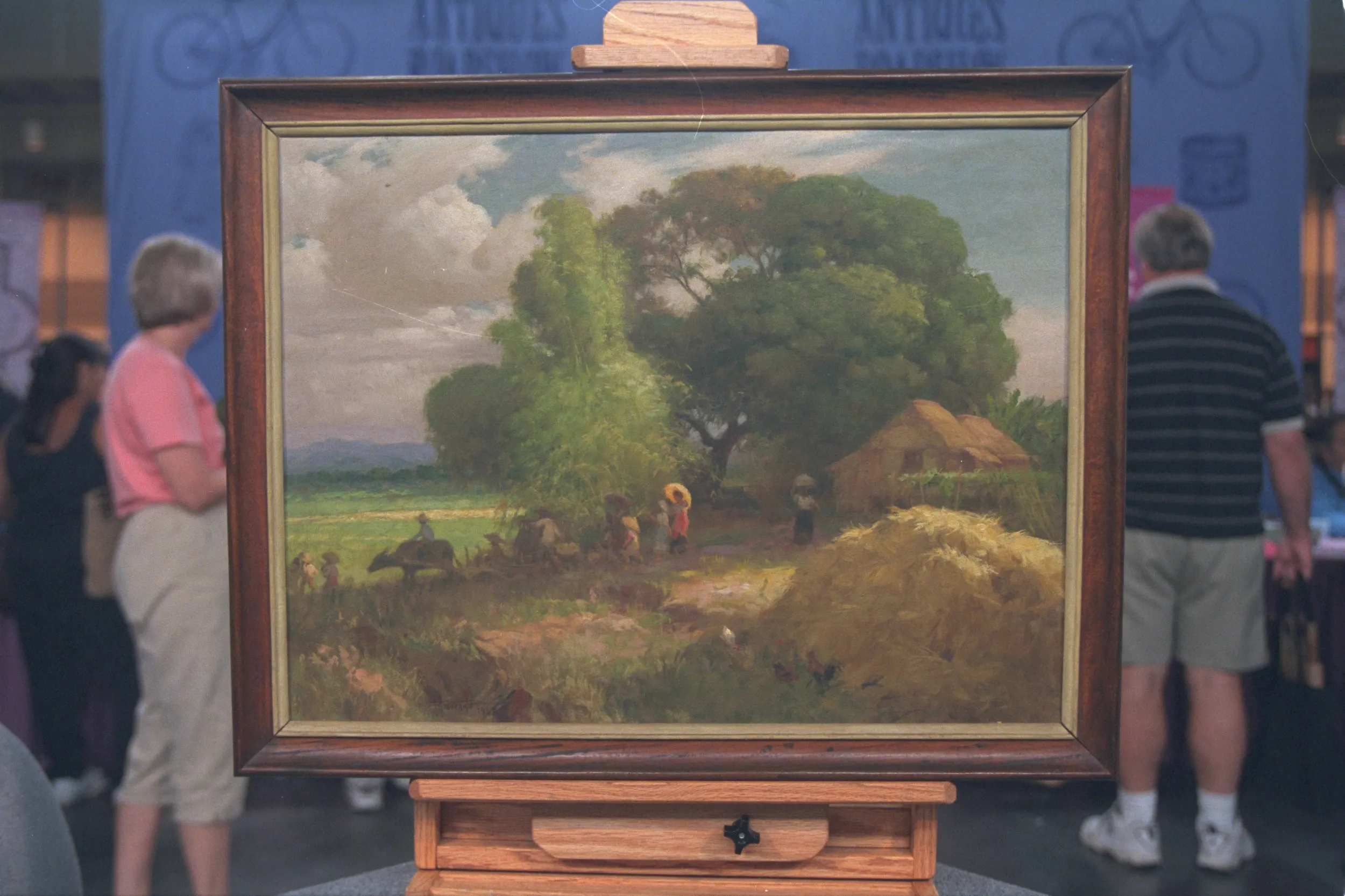GUEST: The artist, Carl R. Krafft is my great-grandfather on my mother's side. I can remember, in the '60s and '70s, visiting my grandmother in Texas, and her house was just filled with his artwork. Most of them were landscapes. I remember them being very brilliant and just fun to look at. When she passed away in 1983, all of the artwork was divided up amongst her six children. One of them is my mother. And she, since then, has divided up the ones that she had amongst her five children. And this is one of the ones that has worked its way down to me.
APPRAISER: I assume you know quite a bit about Carl Krafft and his career.
GUEST: What I know is that he was an artist in the Chicago area. He did many paintings, and he exhibited them, but I just don't know the value of those paintings. I know there is a lot of emotional value to it.
APPRAISER: Of course.
GUEST: And this particular one I liked because of the brilliant color in it. I think the name of this one is "Autumn Reds," because of the fall scene of it, but between the yellows and the greens and the reds, it was just a very emotionally pretty painting to me.
APPRAISER: A little bit of background about him: He was born in the mid-1880s in the Chicago area. He's identified with Oak Park, which is where his original studio was.
GUEST: Okay.
APPRAISER: Although he did work all over the Midwest, and in fact, even in other parts of the country. He's identified more or less as a sort of Midwestern sort of Impressionistic, early-20th-century landscape painter. And in the early 1910s, he was instrumental in setting up the Ozark Society of artists, which was a very large and substantial artists' colony in Missouri, in the Ozarks.
GUEST: Okay.
APPRAISER: Which attracted a lot of artists, because of the remote setting. It was apparently very pastoral, very beautiful, and in part as a reaction to the horrors of World War I, he attracted a lot of really top artists to come there...
GUEST: Interesting.
APPRAISER: ... and paint to get some relief from what was going on around them in the world. But he was in New York, he was in Pennsylvania, he was a busy guy. He set up, or was involved in artists' associations in two or three other places, mainly in Illinois. And was very prolific and very successful, and sold a lot of pictures during the Depression, particularly.
GUEST: Wow.
APPRAISER: The date of this picture is 1936, which we know from the label on the back. And the painting is oil on canvas. Do you know the story about the thumbprint?
GUEST: No, but I do know that several of the ones that my mother has all have the thumbprint on them.
APPRAISER: Do they? I was kind of hoping...
GUEST: And one other one that I have has the thumbprint on it.
APPRAISER: I was kind of hoping we'd find it here.
GUEST: But I don't know the story behind the thumbprint.
APPRAISER: But I don't see it. Well, as I understand it, he was sufficiently successful that during the Depression years, in particular, his work was plagiarized. As a reaction to that, he began putting his thumbprint on his paintings, and my colleague who's actually seen these says that it is right between the "Carl" and the "Krafft."
GUEST: And that is true, that's where the one that I have is located.
APPRAISER: And then it says "Carl" thumbprint "Krafft." And I was, I was wishing this was here, because I think it would just be really fun to see, but in any case.
GUEST: Does the thumbprint add any value to any of the other paintings?
APPRAISER: I don't believe so. But it certainly does...
GUEST: It's just an interesting idea.
APPRAISER: It certainly authenticates them. I think that if this were to appear in an appropriate auction, in the Midwest, I think an estimate on this picture would probably be between $2,500 and $3,500.
GUEST: Well, that's excellent!
APPRAISER: And I wouldn't be surprised if it made more, because it's so lovely. I would think a picture of this quality, of that period, in a way, ought to be worth more. But in a sense, he was his own worst enemy, because he was very prolific, so there are quite a few of them available.
GUEST: Yes.
APPRAISER: That is never a good thing for price structure.
